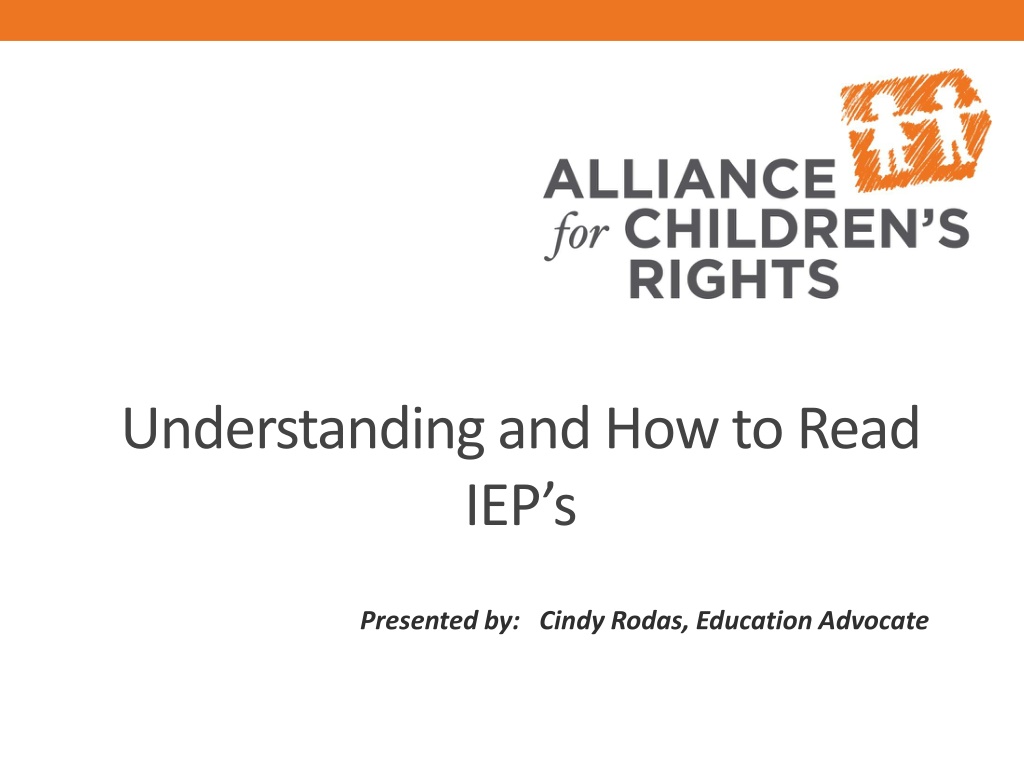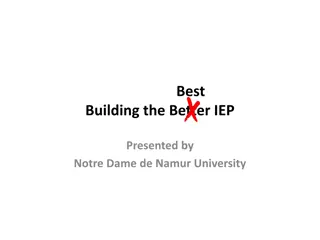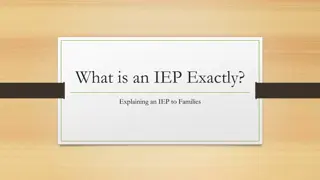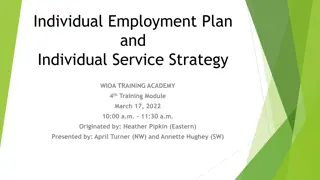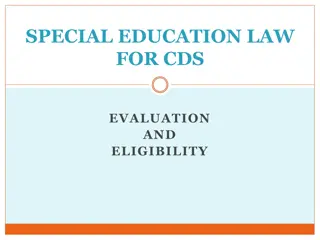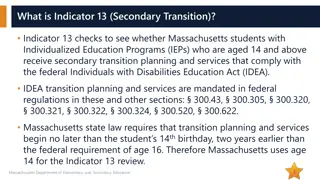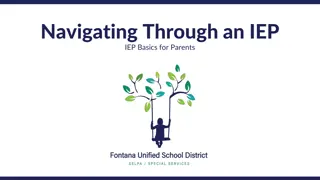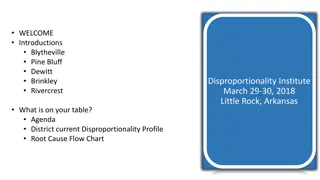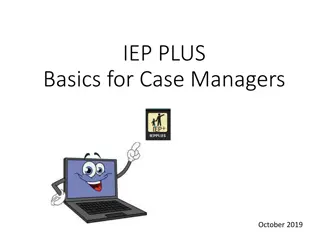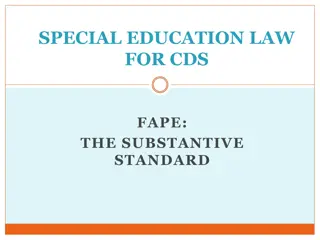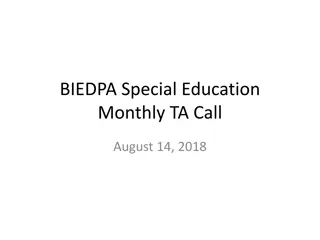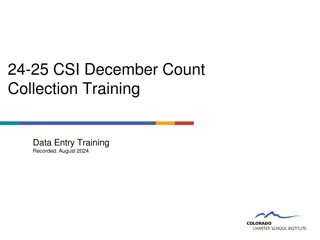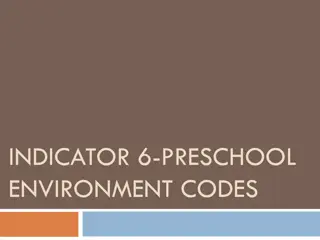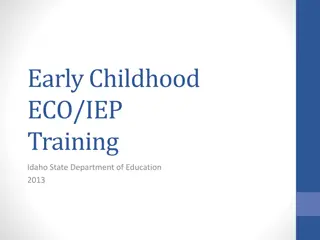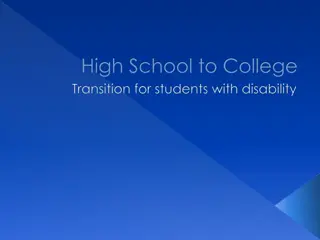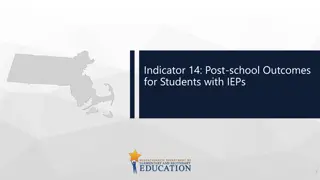Understanding and Reading Individualized Education Plans (IEPs) by Cindy Rodas: Key Insights
Gain valuable insights on understanding and reading Individualized Education Plans (IEPs) through this educational presentation by Cindy Rodas, an Education Advocate. Learn about the components of IEPs, examples, and essential tips. Explore topics such as the basics of Special Education, identifying the needs of children, the IEP process, and the different types of IEP meetings. Discover who should attend IEP meetings and understand the importance of individualized education to cater to each student's unique requirements.
Download Presentation

Please find below an Image/Link to download the presentation.
The content on the website is provided AS IS for your information and personal use only. It may not be sold, licensed, or shared on other websites without obtaining consent from the author. Download presentation by click this link. If you encounter any issues during the download, it is possible that the publisher has removed the file from their server.
E N D
Presentation Transcript
Understanding and How to Read IEP s Presented by: Cindy Rodas, Education Advocate
You will be able to identify: Overview of Special Education 101 IEP s-what are they? Components of IEP Examples of IEP s Tips
Overview of Special Education 101 What is Special Education? Who is an appropriate education right s holder? Common warning signs hat a child might need special education services How to request special education assessments? How to prepare for an IEP meeting?
What is an IEP? Special education must be individualized to meet child s unique needs. Individualized Education Program is created to address each students needs. The program identifies each students needs, goals, classroom placement and services. Cal. Educ. Code 56013 Education Manual, Page 18
6 kinds of IEPs Initial Determines eligibility for special education. Annual An IEP must be held at least once a year. Triennial Every 3 years, schools must conduct new assessments to determine a student s progress, and discuss those assessments at an IEP meeting. Amendment/Addendum The ERH or school can request a meeting at any time to modify an existing IEP. After written ERH request, the IEP must be held within 30 calendar days. 30-Day/Transfer An IEP must be held within 30 calendar days of transfer to a new school district to discuss placement options and services within the new district. District must implement the old IEP and provide comparable services for the first 30 days. Manifestation Determination IEP If a child with an IEP is suspended for 10+ days in a school year or is recommended for expulsion, a manifestation determination IEP meeting must be held. If the behavior was closely related to the disability, no further discipline can happen and the school must conduct a behavior assessment. Schools must notify you of a manifestation IEP. Cal. Educ. Code 48915.5, 56043, 56302.1, 56341.1 1. 2. 3. 4. 5. 6. Education Manual, Page 18
Who should attend IEP meetings? Required Members Optional Members Education Right Holder General Education Teacher Special Education Teacher Administrative Designee Any person who has assessed the child or who provides services, if those services are being discussed Parent or current caregiver (if not ERH) School Psychologist Social Worker Other school personnel who provide services or complete an assessment (e.g. speech and language pathologist) Education Manual, Page 18
What happens at the IEP meeting? The Written IEP includes 5 main components: Placement Services 1. Statement of Eligibility 2. Present Levels of Performance Goals 3. Annual Goals and Objectives Present Levels 4. Statement of Services 5. Statement of Placement Eligibility Cal. Educ. Code 56341.1 Education Manual, Page 18
DETERMINING ELIGIBILITY FOR SPECIAL EDUCATION SERVICES
Eligibility Categories Basics Developmental Delay (DD) Deaf/Hard of Hearing (DHH) Specific Learning Disability (SLD) Visual Impairment (VI) Traumatic Brain Injury (TBI) Orthopedic Impairment (OI) Speech and Language Impairment (SLI) Autistic-Like Characteristics (AUT) Mental Retardation (MR) Other Health Impairment (OHI) Multiple Disabilities (MD) Only one category needs to be present in order be found eligible for the special education program The eligibility category does not limit the student to any specific placement, service or therapy See Handout 4: Eligibility Checklist for more details Education Manual, Page 18
Eligibility Examples Example 1 Example 2
Emotional Disturbance (ED) Myth: a child s IEP records and ED label will follow them for the rest of their lives. Truth: a child s IEP records are confidential and can only be released with written permission of the ERH. Myth: children will be ineligible for certain jobs if they are labeled as ED. Truth: If the youth applies to a profession that will use weapons (such as police or military), the applicant must agree to release their education and mental health records as part of the application process, which will be one piece of information that is considered. Myth: Not labeling a child as ED will protect them. Truth: Making a needy child eligible as ED will help them access services to hopefully address the emotional or behavioral need.
Present Levels of Performance and Annual Goals & Objectives PLOP: Indicates how the child is currently doing in all areas where they are having problems G&O: Indicates what the IEP team will work on for the next year to help the child perform better in school. Both PLOP s and G&O s must be Understandable, Measurable, Specific and Comprehensive Example: Billy is having trouble communicating. vs. Billy has limited expressive vocabulary & is not able to express his feelings with words. Billy will use more words to express himself. vs. Billy will use 2 to 3 word phrases to communicate his needs and feelings 80% of the time. Education Manual, Page 19
PLOP/GOAL Example Example 1 Example 2
WHAT IS A SPECIAL EDUCATION PLACEMENT?
Placement Options Children with disabilities should be placed in the Least Restrictive Environment ( LRE ). Cal. Educ. Code 56040.1 Non-Public School (NPS) Special Day Class (SDC) RSP/SAI Pull-Out RSP/SAI Push-In Resource Specialist Program (RSP) or Specialized Academic Instruction (SAI) Collaboration General Education Education Manual, Page 20
Placement Examples Example 1 Example 2 Tip: Make sure that to always tour the classroom placement options before consenting to IEP.
WHAT SERVICES ARE AVAILABLE?
Services Speech and language therapy: Helps children develop expressive and receptive language skills and improve their pronunciation of sounds/words. Occupational therapy: Helps improve fine motor and visual motor skills necessary for writing, drawing, copying and cutting. Adapted physical education: Helps children who have difficulty with motor skills to be able to participate in PE. Physical therapy: Helps children with physical limitations access their school environment. Psychological (DIS) counseling, ERMHS/ERICS therapy, or behavioral support services: Help children develop social and emotional coping skills and improve behavior through school-based (and school provided) supports. Transportation: For kids whose placement puts them in a school other than their home school or if a student s disability limits ability to get to school. Extended School Year Services: Special education summer school. Education Manual, Page 21
Related Services Examples Example 1 Example 2 Tip: Remember this is a contract. Frequency and duration should be identified for each related service offer. Also, make sure to ask whether it will be a collaborative/direct/group service.
IEP Consent The IEP is a contract. The ERH can agree with none, all, or certain portions of the document. If the ERH does not sign an IEP, the prior IEP remains in place. Make sure any disagreement is noted in writing on the IEP document. Make sure to thouroughly review the IEP before consenting. Education Manual, Page 21
Overview Overview of Special Education 101 IEP s-what are they? Components of IEP Examples of IEP s Tips
For more help If you have exhausted every outlet, seek help. Ask the minor s attorney to complete a referral for a 317(e) attorney to be appointed Call the Alliance for Children s Rights (213) 368-6010 or visit our website: www.kids-alliance.org
